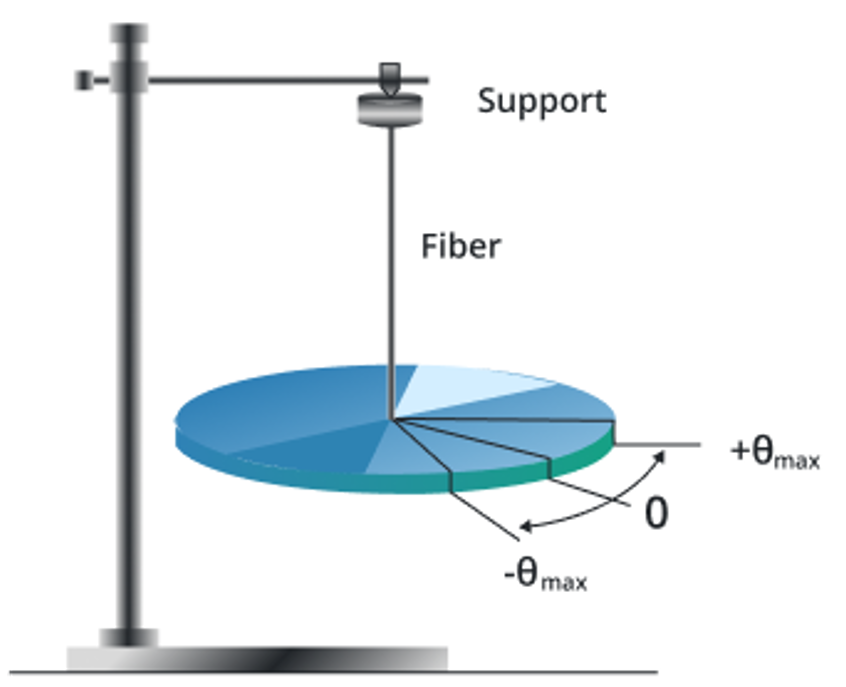Physical and Torsional Pendulums (Do this AFTER completing Rotation)
Before you get stressed out, this is NOT a major part of the test. You might get 1 or 2 questions on this so it's best to be prepared.
Physical Pendulum
A physical pendulum is any rigid body that oscillates about a horizontal axis that does not pass through its center of mass. Unlike a simple pendulum, the mass distribution affects the period of oscillation.

\[ T = 2\pi \sqrt{\frac{I}{mgd}} \]
• \(I\) = moment of inertia about the pivot point
• \(m\) = mass of the object
• \(g\) = acceleration due to gravity
• \(d\) = distance from pivot to center of mass
The moment of inertia depends on the shape and mass distribution of the object. For common shapes:
- Thin rod about end: \(I = \frac{1}{3}mL^2\)
- Thin rod about center: \(I = \frac{1}{12}mL^2\)
- Solid disk about center: \(I = \frac{1}{2}mR^2\)
- Solid sphere about center: \(I = \frac{2}{5}mR^2\)
Physical Pendulum Simulation
Angular Position vs Time
Angular Velocity vs Time
Torsional Pendulum
A torsional pendulum consists of a disk or other object suspended by a wire or fiber that twists when the object rotates. The restoring torque is proportional to the angular displacement.

\[ T = 2\pi \sqrt{\frac{I}{\kappa}} \]
• \(I\) = moment of inertia of the oscillating object
• \(\kappa\) = torsional constant (torque per unit angular displacement)
The torsional constant \(\kappa\) depends on the material properties of the wire and its geometry:
• \(G\) = shear modulus of the wire material
• \(r\) = radius of the wire
• \(L\) = length of the wire
Torsional Pendulum Simulation
Angular Position vs Time
Angular Velocity vs Time
Comparison and Applications
Physical Pendulums: Used in clocks, metronomes, and measuring devices. The period depends on the mass distribution and can be used to determine the moment of inertia of irregular objects.
Torsional Pendulums: Used in sensitive measuring instruments like galvanometers, seismometers, and torsion balances. They can measure very small forces and are used in precision experiments like the Cavendish experiment to measure gravitational constant.
• Physical pendulum: Period depends on gravity and mass distribution
• Torsional pendulum: Period independent of gravity, depends only on moment of inertia and torsional constant
• Physical pendulum: Restoring force from gravity
• Torsional pendulum: Restoring torque from twisted wire